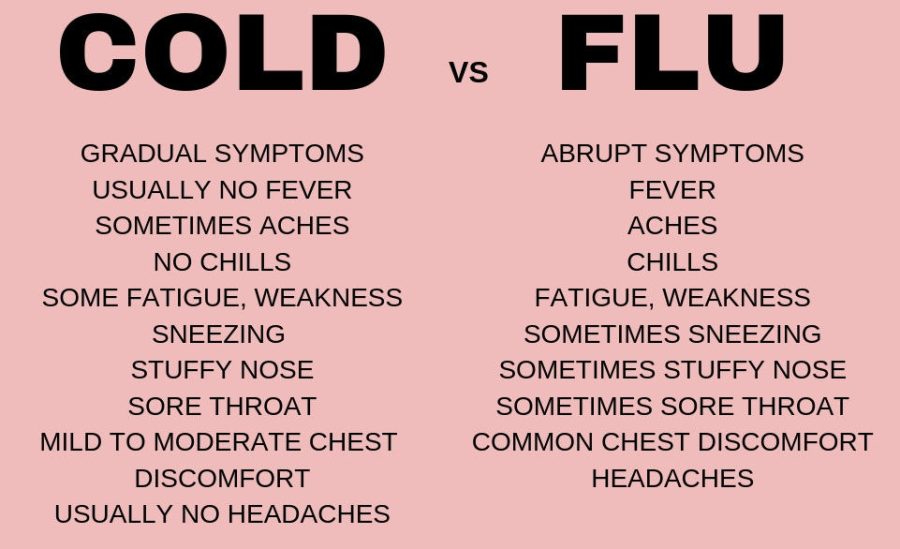Flu season is here, and it could get worse
February 6, 2019
DeWeese runs out of flu shots
Despite the Centers for Disease Control and Prevention’s (CDC) prediction that the worst of this year’s flu season is yet to come, Kent State’s DeWeese Health Center is out of flu vaccines and won’t receive any new shipments.
Shelly Verba, the nurse manager at DeWeese, said students, faculty and employees should go to local pharmacies, such as Walgreens or CVS, for their flu shots.
Although health professionals recommend people get the flu shot early in the season, it’s not too late to get one, said Scott Dotterer, the coordinator at Kent State’s Office of Health Promotion.
“With students being so busy, it’s especially important that they stay healthy and avoid missing class, work and other campus activities due to illness,” Dotterer said.
Students should also take other precautions, such as sneezing into their elbows or tissues, washing their hands, using hand sanitizer and wiping down counters to avoid spreading germs, according to the CDC.
“It’s essential for people to recognize that getting vaccinated can not only help protect them, but it can reduce the chance that they will spread it to other people,” Dotterer said.
Hospitalization rates for this year’s flu remain significantly lower than last year’s rates. The CDC tracks trends throughout the season to predict the upcoming flu forecast. This year, it suggests the end of February will see the most flu activity.
Flu hospitalizations in 2019:
PORTAGE COUNTY
-
Week 1: 14 hospitalizations
-
Week 2: 24 hospitalizations
-
Week 3: 29 hospitalizations
-
Week 4: 34 hospitalizations
SUMMIT COUNTY
-
Week 1: 51 hospitalizations
-
Week 2: 69 hospitalizations
-
Week 3: 83 hospitalizations
-
Week 4: 93 hospitalizations
Final report for 2016-17 (2018-19 in progress):
PORTAGE COUNTY: 118 hospitalizations
SUMMIT COUNTY: 430 hospitalizations
Information from the Ohio Department of Health.
Since Jan. 1, Portage County has seen an uptick in flu-related illnesses each week, according to the Ohio Department of Health (ODH).
J.C. Benton, the assistant director of communications of ODH, said in an email there were more than 1,000 flu-related hospitalizations so far this season, which is less than last year’s 7,353 around this time of the season.
The ODH reported Cuyahoga County has the highest number of flu-related hospitalizations so far with more than 300.
Those at the highest risk for the flu are pregnant women, young children, the elderly and those with weakened immune systems, according to the CDC.
The ODH and the CDC recommend everyone six months old and older get a flu shot as the best protection against seasonal flu viruses. It takes about two weeks for a flu shot to take full effect, Benton said.
The flu shot contains several strands of previous flu viruses, which create antibodies to help the body fight off potential infection.
Common flu symptoms include fever, cough, sore throat, fatigue, body aches and chills. If students experience these symptoms, they should seek medical attention, said James Crowley, a nurse practitioner at DeWeese Health Center.
According to the CDC, adults can start infecting others a full day before flu symptoms even emerge.
Key facts about the flu:
-
Most contagious three to four days after illness begins
-
Can infect others five to seven days after being sick
-
Symptoms can develop within one to four days
-
Can be spread through talking, sneezing, coughing, touching surfaces
-
There’s more than 3 million cases in the U.S. each year
Information from the Centers for Disease Control and Prevention.
If flu-like symptoms arise, Crowley recommends drinking lots of fluids, getting rest and avoiding contact with other people.
The flu should not be taken lightly and should be treated as a priority, Benton said. Although most people recover from the flu, some severe cases can lead to pneumonia and respiratory failure.
Anu Sharma, Jessica Skitzki and Paige Bennett contributed to this story.
























